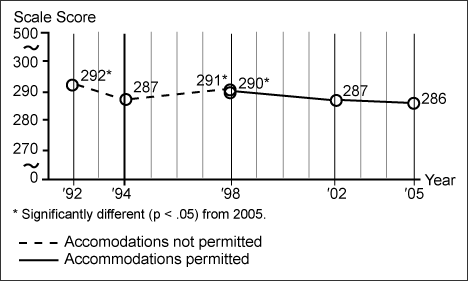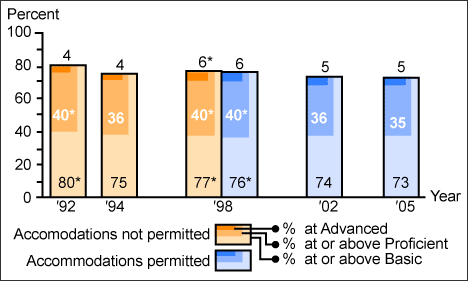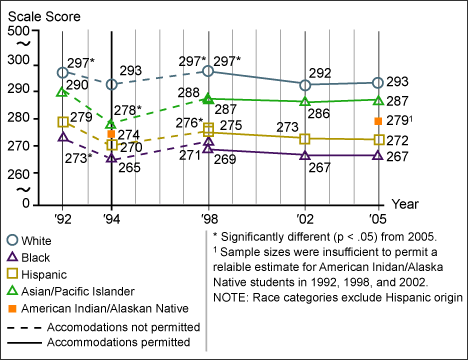

In 2005, a representative sample of over 12,000 high school seniors from 900 schools across the country was assessed in reading. This indicator presents the national results from the 1992, 1994, 1998, 2002, and 2005 National Assessment of Educational Progress (NAEP) reading assessments.
In 2005, the average reading score for high school seniors was 286 on a 0–500 scale (figure 1). This overall average was lower than in 1992, although it was not significantly different from the score in 2002. The percentage of students performing at or above Basic decreased from 80 percent in 1992 to 73 percent in 2005, and the percentage of students performing at or above the Proficient level decreased from 40 to 35 percent (figure 2).


As shown in figure 3, 2005 scores for both White and Black students declined in comparison to 1992. Apparent declines over the same time period for other racial/ethnic groups were not statistically significant.
Although not shown here, the percentages of students performing at or above Proficient were lower in 2005 than in 1992 for White students but showed no significant change for other racial/ethnic student groups.
There was no significant change in the gaps between White students and their Black or Hispanic counterparts in comparison to either 1992 or 2002.
